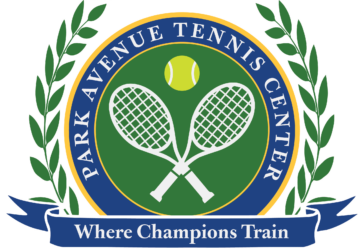“Go for your shots, and whether you win or lose, keep on going for your shots!” This was the instruction I gave my 15-year-old student entering into a junior tennis tournament.
Did I really think he was going to follow this advice? So few actually do. Well, I was hoping he would be an exception, and, as it turned out, he was! My student, Isaac, played the tournament without fear or reservation, mentally freeing himself to go for his shots no matter what happened. The result? He lost his first match 6-1, 6-0 to a boy he had almost defeated in three sets in a previous tournament. The second match he lost 6-3, 6-4 and went home. Success!
Maintaining a positive, ‘go for your shots’ mindset while under the pressure of losing was an epic challenge in itself. Then, to add to the difficulty, Isaac caught some static from the people around him. They wanted to know what in the world he was doing! He tried to explain but spoke to no avail. When I finally got to him, he was a little confused because of all the contrary opinions thrown at him.
His performance under that type of pressure was brilliant and displayed champion-type thinking. I made sure he understood this, then I added, “Unfortunately, when you learn to think like a champion, most people will be against you and will tell you that you are wrong. This is sad but true. You have to make up your own mind which way to go. You can go with the herd, or you can step out as an individual and stand firm regardless of what is said.” Like a true tennis warrior, this young player took the brunt of the criticism, stood firm and moved on. Fantastic!
If this scenario confuses you and my advice does not make sense, let me explain what you may be missing. Learning is stratified. As we learn, we build one principle upon another. Most of us understand this concept when it comes to a school subject like mathematics where we build from arithmetic to algebra to calculus. The physical game of tennis is also stratified, as is the mental game. Though when it comes to the mental game, misinformation and uncertainty tend to trap many players on the ground floor!
Let me tell you what happened with Isaac. During that tournament, he had discovered and experienced a brand new level of control — mental control, that is. He had learned that the mental attitude of ‘going for his shots’ was within his own power. The foundational level of the stratification process was set firmly into place, and in the weeks that followed, going for his shots was no longer an issue. This meant he was ready to experiment with higher-level thinking. Freedom to go for his shots meant freedom to focus on the next levels: accuracy and consistency. Why was that? Because his mind was no longer frozen with fear of missing or losing! He could concentrate his mental energy on aiming his shots and playing more consistently. And now, weeks after the tournament, this boy has become a totally different player. All because he had the courage to do the right thing even though he knew he would probably lose.
Really, how can any player effectively concentrate on accuracy or consistency when that player has not yet overcome the fear of missing? He obviously cannot! Priority number one is to master the mindset of going for shots and accepting the outcome. Once this first hurdle is overcome, a clear mental pathway opens up that leads to greater, more advanced thinking skills.
Remember that going for your shots does not mean to kill the ball every time. It means the absence of cautiousness or tentative play. You could be hitting a drop shot and still be going for the shot. The point is, you execute the stroke freely and instinctively, without holding back for fear of missing. Some players try to master this mindset by cautiously going for their shots. This does not make any sense! There is no cautiously going for your shots. You either do it or you do not.
Yes, you might fail enormously while you are learning this mindset, but sooner or later you must sacrifice some matches in order to master this incredible champion-type thinking. May I remind you, a teenager did it! You could begin with your practice matches and eventually use it in your important matches.
The concept is simple. Learning the correct mental attitude is a stratified process. One layer builds upon another. Not only that, but the stratification process is also prioritized. In other words, if you want to build a structure that is solid and unshakeable, each layer must be laid down in the correct order. The first priority in tennis is to learn to go for your shots without fear of missing. First you master going for your shots, then you are free to learn other aspects of match-play thinking. It generally goes like this: Once you possess a clear and uncluttered mind, adding a new skill like accuracy becomes easier. As you learn more accuracy, you become more consistent in your play. Consistency and accuracy, in turn, give a monumental boost to your ability to execute match-play strategies. As you can see, with every layer that is put into place, you become a smarter and stronger player.
This process is a gradual one — it requires much practice and determination, and, like any worthwhile endeavor, it is not without its struggles. But my student has risen to the challenge, and I believe you can too! http://www.tenniswarrior.com/

